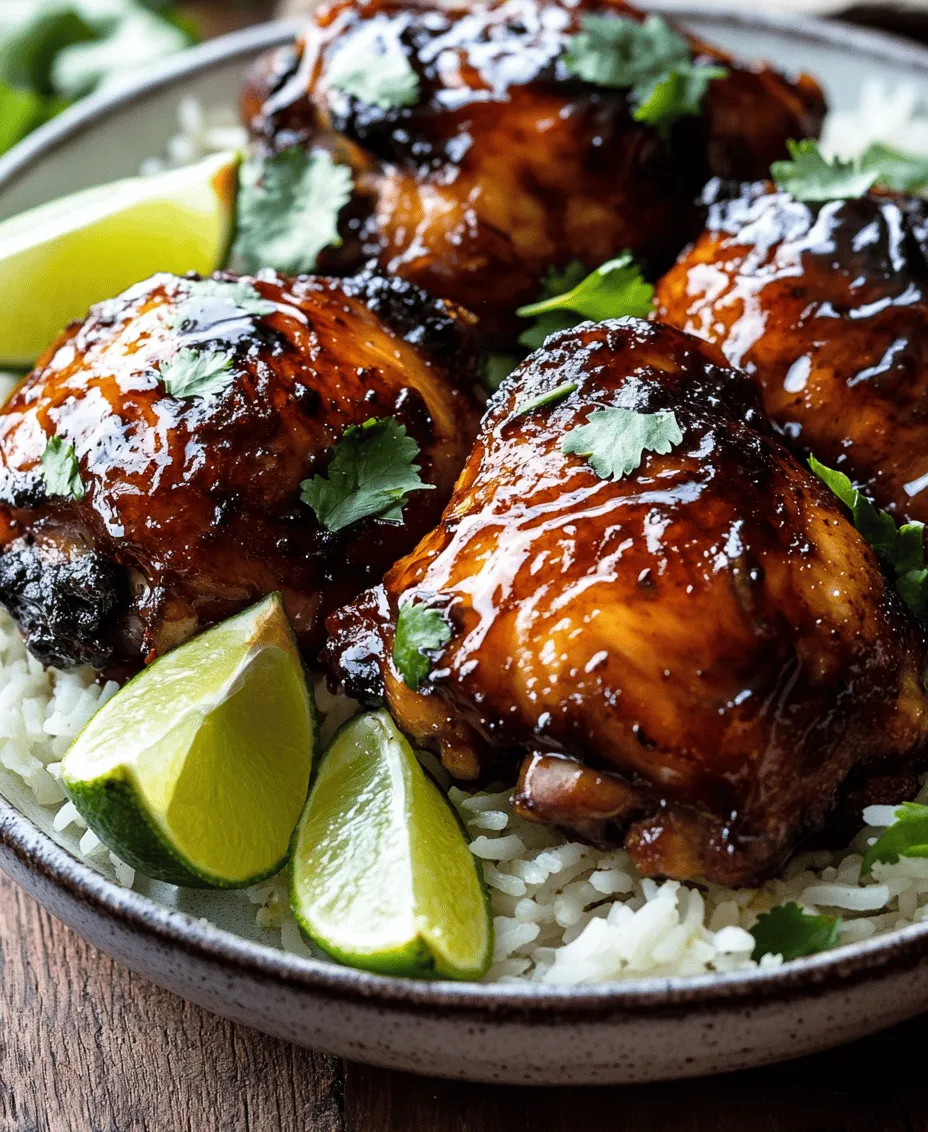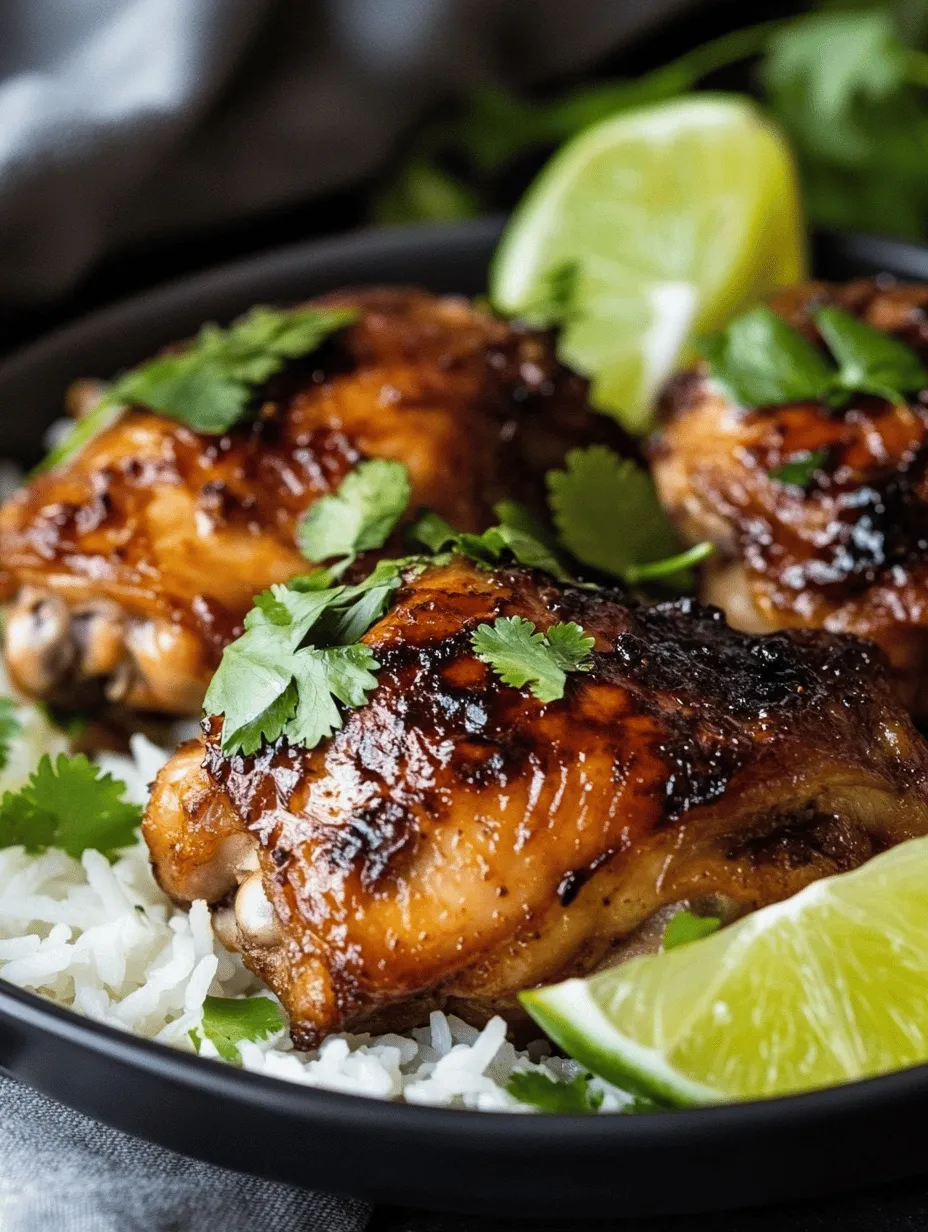Discover the vibrant flavors of Southeast Asia with our delectable Tamarind Chicken Delight. This dish effortlessly marries the tangy essence of tamarind with the savory notes of soy sauce and honey, creating a unique and mouthwatering experience that is sure to tantalize your taste buds. Whether you’re looking for a quick weeknight dinner or a dish to impress your guests at a special gathering, this recipe is designed with minimal preparation and cooking time in mind. In this article, we will explore the ingredients, preparation steps, and the rich cultural significance of tamarind in culinary traditions around the world.
Understanding Tamarind: A Culinary Treasure
The Origin of Tamarind
Tamarind (Tamarindus indica) is a tropical fruit native to Africa, and its name derives from the Arabic term “tamr hind” which translates to “Indian date.” Historically, tamarind has played a vital role in various cultures, dating back thousands of years. Ancient Egyptians used it for medicinal purposes, while in India, it has been a staple in the cuisine for centuries, often used in chutneys and sauces. Today, tamarind trees thrive in tropical and subtropical regions, including Southeast Asia, India, and parts of South America, where they are cultivated for their flavorful pods.
The tamarind fruit grows in long, curved pods that contain a sticky pulp. This pulp is the culinary gem that imparts a unique sour-sweet flavor to dishes. Its versatility has made it a beloved ingredient in many cuisines around the world, especially in Asia, where it is often used to enhance the taste of savory dishes, soups, and desserts.
Nutritional Benefits of Tamarind
Beyond its culinary uses, tamarind boasts a variety of health benefits. It is rich in vitamins, minerals, and antioxidants, making it a nutritious addition to your diet. The fruit is an excellent source of vitamin C, which supports the immune system and promotes healthy skin. Tamarind also contains B vitamins, potassium, magnesium, and dietary fiber, contributing to overall health and well-being.
One of the standout features of tamarind is its antioxidant properties, which help combat oxidative stress in the body. Additionally, tamarind has been traditionally used in folk medicine for its potential digestive benefits and ability to support heart health. This makes tamarind not only a flavorful ingredient but also a nourishing one.
Tamarind in Global Cuisines
Tamarind is a beloved ingredient across many cultures, particularly in Asian cuisine. In Indian cooking, it is often used to create tangy sauces, chutneys, and curries, providing a distinctive flavor that elevates dishes. Thai cuisine utilizes tamarind in its famous pad thai and various soups, where it adds depth and complexity. In Mexico, tamarind is transformed into refreshing drinks and candies, showcasing its versatility.
Beyond these regions, tamarind has made its mark in the culinary traditions of various countries. In the Caribbean, it is used to prepare sauces and marinades for meats, while in East Africa, it enhances the flavors of stews and soups. Each culture has its own signature dishes that spotlight tamarind, highlighting its ability to bring a unique flavor profile to a wide range of recipes.
Ingredients Breakdown
Fresh Ingredients for Maximum Flavor
To create an unforgettable Tamarind Chicken Delight, it’s essential to use fresh ingredients that will enhance the overall flavor of the dish. Fresh herbs, spices, and produce not only contribute to the taste but also add vibrant colors and aromas that make the cooking experience enjoyable.
Importance of Fresh Herbs and Spices
Using fresh herbs, such as cilantro or green onions, can elevate your dish significantly. Fresh cilantro adds a bright, citrusy flavor that complements the tanginess of tamarind, while green onions provide a mild onion flavor and a pop of color. When it comes to spices, using whole spices that you can grind just before cooking will yield a more intense flavor than pre-ground spices. For this recipe, consider using fresh ginger and garlic, which add warmth and depth to the marinade.
How Fresh Ingredients Enhance the Dish
The quality of your ingredients will directly impact the final outcome of your Tamarind Chicken Delight. Fresh, high-quality chicken thighs are preferred for their juiciness and flavor. Opting for organic or free-range chicken can provide a richer taste and better texture. Similarly, using fresh tamarind paste or pulp will ensure that the distinct sourness shines through, creating a balanced dish.
Essential Pantry Staples
In addition to fresh ingredients, certain pantry staples are crucial for the successful execution of this recipe. These items are often readily available and can easily be substituted if necessary.
Overview of Pantry Staples Used in the Recipe
The primary pantry staples for Tamarind Chicken Delight include soy sauce, honey, garlic, and ginger. Soy sauce provides a salty umami flavor that pairs beautifully with the tang of tamarind. Honey adds a touch of sweetness, balancing the dish’s acidity. Garlic and ginger, both aromatic ingredients, contribute to the overall depth of flavor.
Substitutions for Common Ingredients
If you find yourself missing an ingredient, there are several substitutions you can make without compromising the dish’s integrity. For example, if you don’t have tamarind paste, you can use lime or lemon juice as a substitute, though the flavor will differ slightly. For those avoiding soy sauce, tamari or coconut aminos can serve as gluten-free alternatives. If honey is not available, maple syrup or agave nectar can provide a similar sweetness.
Marinating the Chicken: A Step Towards Flavor
The Purpose of Marination
Marinating the chicken is a crucial step in developing the flavor of Tamarind Chicken Delight. The purpose of marination is twofold: first, it infuses the chicken with the delicious flavors of the marinade, and second, it tenderizes the meat, resulting in a more succulent dish.
How Marinating Enhances Flavor and Tenderness
The marinade penetrates the surface of the chicken, allowing the flavors to seep into the meat. Acidic components, like tamarind, break down muscle fibers, which helps achieve a tender texture. By allowing the chicken to marinate for an appropriate amount of time, you ensure that every bite is bursting with flavor.
The Science Behind Marination
The science of marination involves a combination of acidity, salt, and flavor compounds. The acid in tamarind not only contributes to the dish’s tangy flavor but also acts as a tenderizer. Salt helps to retain moisture in the chicken, preventing it from drying out during cooking. When combined with the sweetness of honey and the umami of soy sauce, the result is a well-rounded marinade that enhances the overall eating experience.
Step-by-Step Marination Process
To marinate the chicken thighs for your Tamarind Chicken Delight, follow these detailed instructions:
1. Prepare the Marinade: In a mixing bowl, combine 1/4 cup of tamarind paste, 1/4 cup of soy sauce, 2 tablespoons of honey, 4 cloves of minced garlic, and 1 tablespoon of grated fresh ginger. Whisk together until well blended.
2. Select the Chicken: Use skinless, boneless chicken thighs for this recipe, as they are juicy and flavorful. You can also use chicken breasts if preferred, but thighs are recommended for a tender result.
3. Coat the Chicken: Place the chicken thighs into a resealable plastic bag or a shallow dish. Pour the marinade over the chicken, ensuring that each piece is well coated. Seal the bag or cover the dish with plastic wrap.
4. Marination Time: Allow the chicken to marinate in the refrigerator for at least 30 minutes, but for optimum flavor, aim for 2-4 hours. If time permits, marinating overnight is ideal, as it allows the flavors to penetrate deeply.
5. Preparation for Cooking: Once the marination time is complete, remove the chicken from the marinade and let it sit at room temperature for about 10-15 minutes before cooking. This helps to ensure even cooking and better texture.
By following these steps, you will set the stage for a flavorful and tender Tamarind Chicken Delight, ready to be cooked to perfection.
In the next part of this article, we will explore the cooking instructions for this delightful dish, along with some tips for achieving the best results and how to serve it for maximum impact. Stay tuned as we continue our culinary journey into the world of Tamarind Chicken Delight.

Cooking Techniques to Perfect Your Chicken
Cooking chicken to perfection is an art that involves understanding heat, timing, and the nuances of flavor. To achieve a dish as flavorful as Tamarind Chicken Delight, mastering a few key techniques can elevate your culinary skills and ensure a delightful dining experience.
Preheating the Pan: Why It Matters
Preheating your pan is a crucial step that should never be overlooked. When you heat your pan before adding the chicken, you create an environment that allows for better searing, which locks in moisture and flavor. Here are some tips to ensure your pan is perfectly preheated:
1. Choose the Right Pan: For this recipe, a heavy-bottomed skillet or cast-iron pan works best as it retains heat evenly.
2. Heat Gradually: Place your pan over medium heat and allow it to warm up for a few minutes. You can test if it’s ready by sprinkling a few drops of water on the surface; if they sizzle and evaporate quickly, you’re good to go.
3. Add Oil: Once the pan is hot, add your cooking oil. Allow the oil to heat for about 30 seconds until it shimmers slightly. This step ensures that the chicken will sear beautifully, creating a delightful crust.
Cooking the Chicken to Juicy Perfection
Now that your pan is prepped, it’s time to cook the chicken. Follow these detailed instructions to ensure your chicken is juicy and flavorful:
1. Add the Chicken: Place the marinated chicken pieces skin-side down in the hot pan. Avoid overcrowding the pan, as this can lower the temperature and lead to steaming rather than searing.
2. Sear the Chicken: Cook the chicken undisturbed for about 5-7 minutes until a golden-brown crust forms. This process enhances flavor through the Maillard reaction, which occurs during high-heat cooking.
3. Flip and Cook Through: Carefully flip the chicken pieces using tongs. Cook for another 5-7 minutes. To check for doneness, use a meat thermometer; the internal temperature should reach 165°F (75°C). If you don’t have a thermometer, you can cut into the thickest part of the chicken, and the juices should run clear with no pink meat.
4. Rest the Chicken: Once cooked, transfer the chicken to a plate and cover it loosely with aluminum foil. Let it rest for 5-10 minutes to allow the juices to redistribute throughout the meat, ensuring every bite is tender and juicy.
Glazing for Extra Flavor
Glazing your chicken not only adds flavor but also creates a beautiful, sticky coating that enhances the dish’s presentation. Here’s how to achieve the right sauce consistency:
1. Prep the Glaze: After removing the chicken, use the same pan with the leftover juices. Add the tamarind paste, soy sauce, and brown sugar to the pan, scraping the bottom to incorporate the flavorful bits stuck to the surface.
2. Simmer: Bring the mixture to a gentle simmer over medium heat, allowing it to reduce and thicken for about 5 minutes. Stir occasionally to prevent burning.
3. Coat the Chicken: Once the glaze reaches a syrupy consistency, add the chicken back into the pan, turning each piece to coat evenly. This technique ensures that each bite is infused with the delightful tamarind flavor.
Serving Suggestions: Elevating Your Dish
To truly enjoy Tamarind Chicken Delight, consider how you present and accompany the dish. A well-plated meal not only pleases the palate but also the eyes.
Plating the Tamarind Chicken Delight
Presentation is key in making your meal appealing. Here are some tips for beautiful plating:
1. Choose the Right Plate: Opt for a wide, shallow plate that allows the chicken to sit comfortably without crowding.
2. Layering: Start with a base of jasmine rice, creating a bed for the chicken. Arrange the chicken pieces on top, slightly overlapping them for a rustic look.
3. Drizzle the Glaze: Use a spoon to drizzle the remaining glaze over the chicken and rice, adding a glossy finish.
4. Garnish: Fresh herbs such as cilantro or green onions can add a pop of color. A sprinkle of sesame seeds can provide texture and visual interest.
Complementary Side Dishes
To enhance your Tamarind Chicken Delight experience, consider pairing it with complementary side dishes:
1. Jasmine Rice: This fragrant rice is a classic pairing. Its subtle flavor and fluffy texture soak up the tamarind glaze beautifully, making each bite more satisfying.
2. Stir-Fried Vegetables: A mix of colorful vegetables like bell peppers, broccoli, and snap peas adds nutrition and crunch. Lightly stir-fried with garlic and a splash of soy sauce, these vegetables provide a nice contrast to the rich chicken.
3. Cucumber Salad: A refreshing cucumber salad with a squeeze of lime and a pinch of salt can cleanse the palate between bites, balancing the dish’s sweetness.
Health and Dietary Considerations
As with any recipe, understanding the nutritional content and dietary considerations can help you tailor the dish to fit various needs.
Nutritional Value of Tamarind Chicken Delight
A serving of Tamarind Chicken Delight is not only delicious but also packed with nutrients. Here’s a breakdown of the nutritional value per serving:
– Calories: Approximately 350 calories
– Protein: 30 grams
– Fat: 15 grams (mostly healthy fats)
– Carbohydrates: 30 grams
– Fiber: 2 grams
This dish can be tailored for various dietary restrictions. For those seeking gluten-free options, simply ensure that your soy sauce is gluten-free. Additionally, using a low-sugar alternative can make it suitable for those watching their sugar intake.
Making It Your Own: Customization Ideas
One of the joys of cooking is the ability to customize recipes to suit your taste. Here are some ideas for making Tamarind Chicken Delight your own:
1. Adjust Spice Levels: If you prefer a spicier kick, consider adding fresh chilies or a pinch of cayenne pepper to the marinade. For a milder flavor, reduce the amount of chili powder.
2. Vegetarian or Vegan Alternatives: If you want to create a vegetarian or vegan version of this dish, consider substituting chicken with firm tofu or tempeh. Marinate the plant-based protein in the same tamarind mixture and follow the same cooking method for a delightful experience that caters to all dietary preferences.
Conclusion
Tamarind Chicken Delight is not just a meal; it’s a journey through flavors and cultures. With its balance of sweet, tangy, and savory elements, this dish is sure to impress family and friends alike. Whether you’re a seasoned home cook or a beginner, this recipe provides an accessible way to explore the rich culinary traditions inspired by tamarind.
By mastering the cooking techniques, plating presentations, and complementary side dishes, you can create a dining experience that is not only delicious but also memorable. Enjoy the satisfying experience of creating and savoring this delightful dish, and let the flavors transport you to distant shores.



